
Around the Bloc: Slovenia Asks For Help With Migrant Influx
The EU's migration commissioner is in Slovenia to discuss its urgent call for help.
More...We kindly inform you that, as long as the subject affiliation of our 300.000+ articles is in progress, you might get unsufficient or no results on your third level or second level search. In this case, please broaden your search criteria.

The EU's migration commissioner is in Slovenia to discuss its urgent call for help.
More...
Most sensitive cases due to be resolved by December, but Bosnia’s courts face huge backlog and alleged lack of will.
More...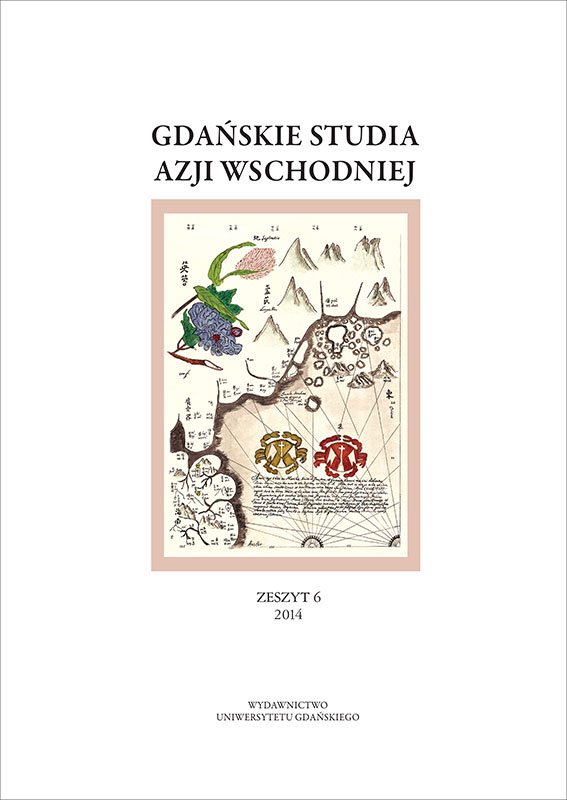
Indonesia, the world’s fourth populous country, has an attractive value proposition for international businesses and investors. The economy is rapidly growing and by 2030 the country could become the world’s 7th-largest economy. However, there are still lacks of information among Polish resources about this market, especially concerning legal issues.The aim of this article is to introduce the general framework of the legal system in Indonesia such as the overview of Indonesian law through historical aspects; separation of powers (including description about executive, judiciary and legislative’s bodies), sources of law (written law and unwritten law as well).This publication contains general information, which will be more developed in further articles to make Polish readers more familiar with Indonesian issues.
More...
Krishna follower faces sanctions for speaking to passers-by and handing out religious books.
More...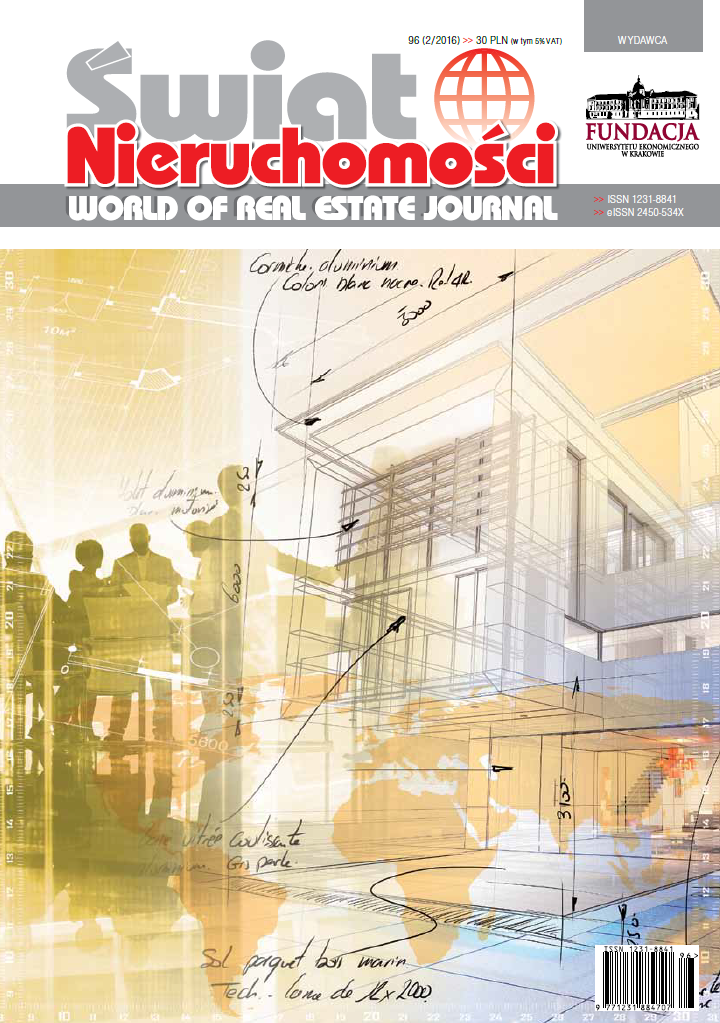
Agricultural real estate has a special place in national economies, and is of crucial political importance. Many investors believe that real properties are areas with high potential of the growth of value, in part due to the demand for food, and in part due to the ability to change their function to the commercial one. The aim of the article is to present the institutional and legal conditions of investment in agricultural real estate in Poland in force until 1 May 2016, with an attempt to assess the attractiveness of such investment and an indication of the potential effects that will be caused by recent changes in legislation. The author analyses the legal conditions of investing in agricultural property in Poland against the principles adopted in selected EU countries, which allows her to identify differences and similarities in the treatment of agricultural property in Poland and the selected EU countries. In addition, she analyses the market size through the volume of transactions of agriculture real estate in Poland, conducts the analysis of changes in the prices of agricultural land in Poland, pointing out changes in the price of such land in the selected European countries. The research also includes the volume of purchase of agricultural real estate by foreigners in Poland. The author uses the study of literature, legal acts, the analysis of the existing data and own calculations.
More...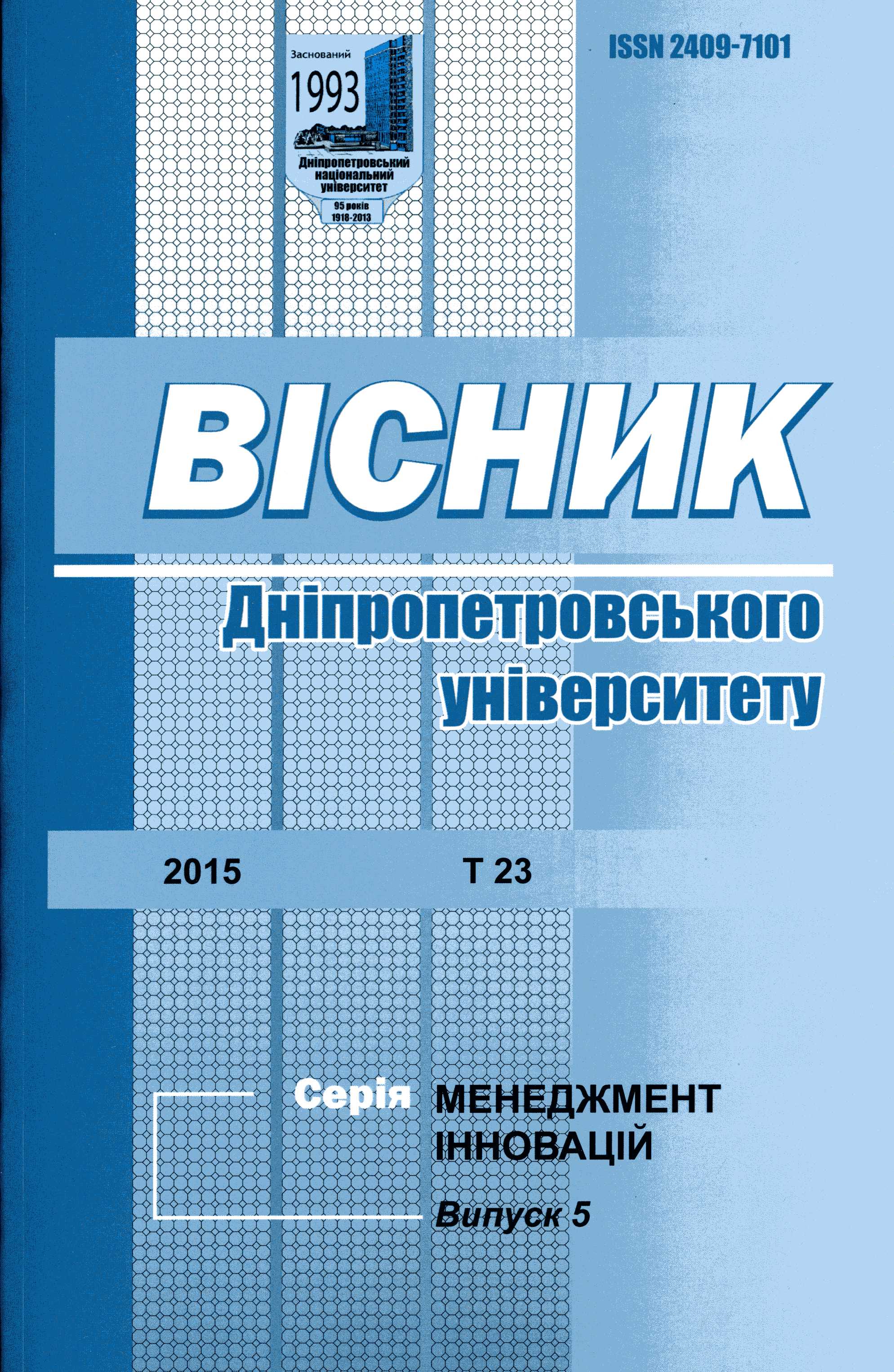
Today the process of democratic transformations in this country is associated with the solution of complex political, economic, social and legal issues, one of which is the government's reorganization and optimization of the structure of its institutions. Given the socio-political and criminal situation in the country, current law enforcement bodies do not meet the requirements of the time. The process of reform of the judicial system started in 2014 in accordance with social requirements and capacities of the state. International experts noted that Ukraine as a member–state of the Council of Europe must improve its laws in accordance with European standards and apply innovative approaches during the period of problem solving. Thus it is necessary to analyze the peculiarities of the reform of the law enforcement bodies in Ukraine.The purpose of this study is to analyse the peculiarities of creation of efficient system of motivation of employees during structural transformations of the state personnel. The set scientific tasks were performed using a complex of general scientific methods: analysis, synthesis, generalization, statistical and comparative.The peculiarities of the process of restructuring of the law enforcement system were analyzed. The ways to create an efficient system of motivation of employees during the structural transformation were explored. We found the most important areas of improvement in the process of encouraging social subjects to the activities with strategic objectives in fighting crime, providing social security in the material and spiritual spheres of life of the society. The paper considers ways to create opportunities of implementation of individual abilities of employees that require a thorough study of the individual abilities and needs of each individual person to revitalize his/her activities to achieve the goals of the organization. We studied such ways of stimulating employees of law-enforcement sphere as participation in development and decision–making, implementation of the contest–based vacancy occupation, demilitarisation of special ranks, democratization of personnel policy, development of professional mobility of the civil servants.It was determined that the next stage of the reform will be creation of local police departments, which will also be arranged with regard to innovative principles of employee motivation: meeting the needs of self–expression and development; independent and transparent competitive mechanism to fill vacant posts (including top management) and the development of professional mobility.Scientific novelty of this work consists in the study of peculiarities of creation of innovative motivation of law enforcement employees in the period of radical reform of the society. Planned reforms were developed taking into consideration international, including European, standards of police activities.The practical significance of obtained results is a comprehensive study of the mechanism of gradual reformatting of state law enforcement institutions and provision of specific recommendations for improvement of the new structure that renders services of protection of public order.Further research in this direction might be focused on finding innovative ways to solve the problems of the reform of the law enforcement system of this country.
More...
The article defines the basic postulates of the ethical concept of civil law and shows their methodological importance for disclosure of the fundamental properties of law and the patterns of its functioning. A conclusion is made regarding the dialectic nature of the transition from moral consciousness to the legal one.
More...
The relevance of the study is determined by the fact that the role of discretionary principles has been enhanced in connection with the development of market relations in the sphere of higher education, which manifests itself in the possibility of teachers to enter into civil law contracts with the educational institution in which they work, as well as with other organizations and entities. The study was performed to determine the specificity of the private legal status of teachers of higher school and to identify their major civil rights and obligations. The objectives of the study are the following: – to examine the legal status of teachers in general; – to identify elements of the legal status of teachers in higher education; – to reveal the contents of the private legal status of higher school teachers; – to compare the private legal status of higher school teachers with their labor status. The leading method of research used by us is the method of analysis of the normative-legal acts and literature devoted to the issues of civil-legal regulation of higher education. The paper points out that university teachers do not have any civil relations with students and are not counterparties to the contract on rendering of paid educational services. The counterparty under this contract is the educational organization of higher education. Civil law relations emerge and develop between the university and students, while the university and teachers have labor relations. Higher school teachers enter into civil law relations at conclusion of civil contracts related to the results of creative activity, agreements on the implementation of individual works and the provision of certain services. Based on the obtained results, it was concluded that higher school teachers, acting as the counterparties to the relevant civil law contracts, gain individual rights and responsibilities, have the burden of private law liability imposed on them, which, ultimately, forms their private legal status. The latter should not be confused with the labor status of university teachers. These findings are important for the law enforcement practice.
More...
The Housing Code of the Russian Federation stipulates ways of protection, which are different from those in the Civil Code of the Russian Federation, thereby requiring careful analysis of the characteristics of methods used to protect the housing rights. The paper assesses the claims for recognition in the judicial practice on housing cases. The recognition objects of housing claims are various legal phenomena designated by such polysemantic term as “right”: subjective rights, entitlement of subjective rights, secondary rights. The problem concerning definition of the recognition objects is solved. In particular, the correlation between claims for recognition of ownership of the place of residence and for recognition of the right to use the place of residence is considered. The conclusion is made about the necessity of refusal of claims for recognition of the right of use, because it is the only subjective element of the housing rights. Similar conclusions are formulated regarding the right to moving into the place of residence and the right to privatization, which are the elements of legal powers to use the place of residence and do not require separate recognition. The current practice of forcing citizens to appeal to the court for recognition of the right of a member of the owner’s family is criticized, since the judicial recognition of this right is not stipulated in the housing legislation. In the light of the civil legislation reform, the question is raised about the relationship between the claims for recognition of the housing rights and the claims for recognition of the rights of obligation. It is concluded that the features of the proprietary rights determine the features of the claims for recognition of the proprietary rights, but not the fact that this method of protection (after changes to the Russian Civil Code) would apply solely to corporeal rights.
More...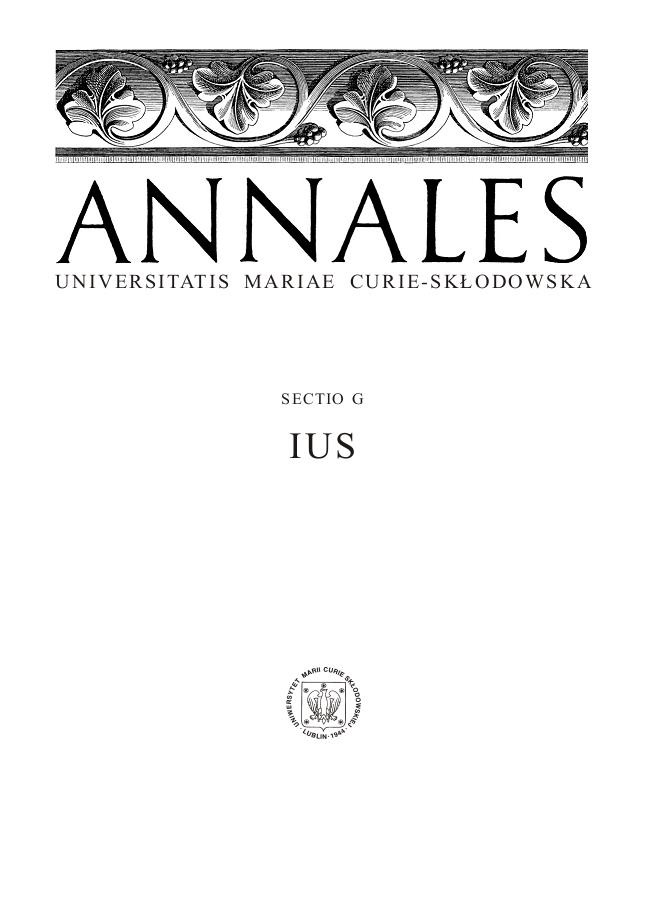
The aim of this article is to present and analyse those aspects of university teaching which areclosely connected with the use in didactics of the tools that originated along with the developmentof electronic media. As an example of the content of this article, there are presentations and analysisof the surveys carried out especially to that matter. Postulated polimethodology in the realisationof the teaching of the history of political-legal doctrines may create a chance to once again presentthe usefulness of history subjects in the process of the teaching of future lawyers. To avoid treatinge-learning only as a way to increase the attractiveness of the classes, one should treat it as a backupmechanism in traditional teaching process. A process which should still be based on direct contactbetween the university teachers and the students.
More...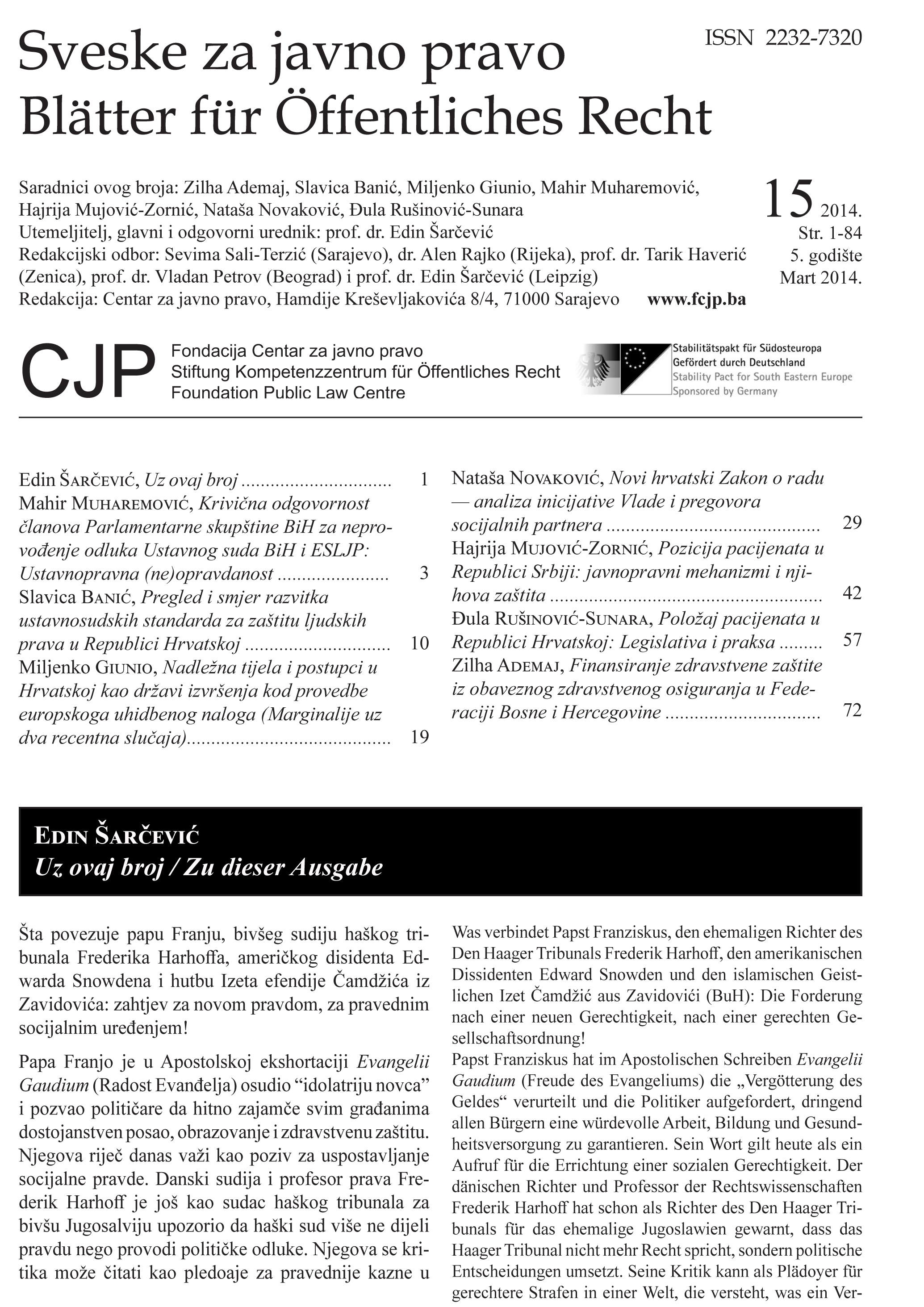
Izvršavanje odluka sudova je od ključnog značaja za svaki pravni sistem. Odluka suda koja se ne izvrši, neće proizvesti željeni efekat, ukoliko subjekti na koje se ona odnosi ne postupe po njoj. Dakle, pravda koja se izriče u neprovedenim odlukama sudova je nedorečena i nezadovoljena pravda. Zbog toga svaka država nastoji maksimizirati efikasnost provođenja odluka svojih sudova, pri čemu razvija određene mehanizme koji će osigurati implementaciju sudskih odluka.
More...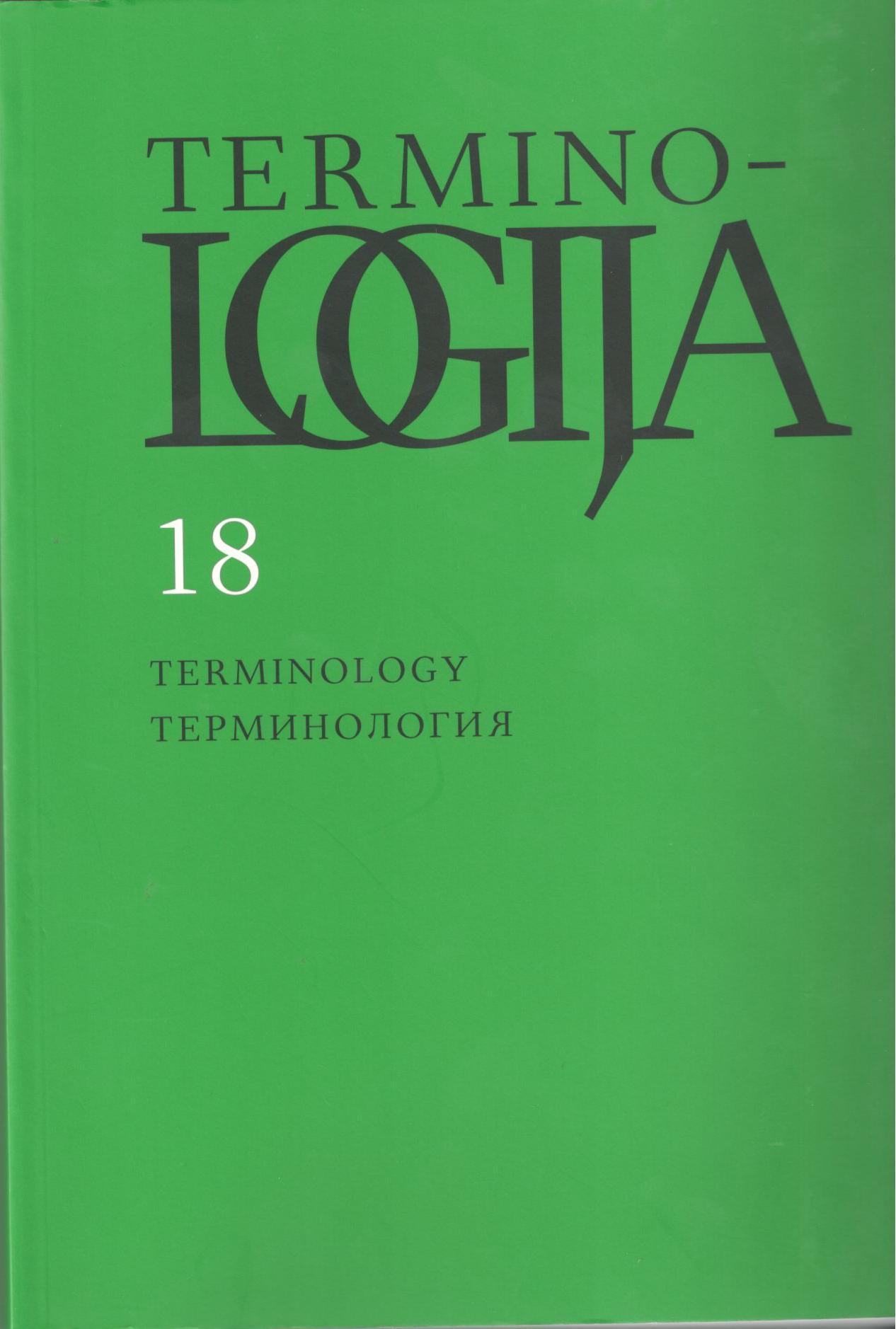
The article deals with the terminographical aspect of the first Lithuanian dictionary of law compiled in Lithuania – manuscript Teisės terminų ir kitų reikalingų teismams žodžių žodynėlio projektas (Draft dictionary of law terms and other words necessary for courts) (1920). The dictionary was prepared by the Ministry of Justice; its main compiler was, most likely, Konstantinas Jablonskis. A number of copies of this manuscript were made, therefore a few of them have survived. This is quite a large translative Russian–Lithuanian dictionary comprising 120 pages. It has a mixed structure – terms (including other lexical and syntactic units) are presented either in separate entries or grouped into a single entry according to some common feature. The dictionary presents diverse material – terms, words and their combinations used in the language of law at that time. Grammatical expression of the data also varies – nouns, adjectives, verbs and other parts of speech are included. Some Russian terms (285 entries) were not translated, though in general the data is rich – there are nearly 3900 different entries with Lithuanian equivalents.The article describes the macro and microstructure of the dictionary, the grammatical and structural types of the data. The dictionary is not particularly well thoughtout, neither is it systematically arranged and some repetition of the data can be found. Still it has to be taken into consideration that it was compiled at a time when there was no terminographical tradition in Lithuania (there were few dictionaries of terms published); therefore its faults shouldn’t be judged strictly. This dictionary is a valuable object for the history of Lithuanian terminography.
More...
This study examined changes in general population gambling in the light of two major amendments of the German gambling regulation, the Fifth Amendment of the German Gambling Ordinance (AGO) for commercial amusement machines with prizes (AWP) and the State Treaty on Gambling (STG) for gambling activities subject to the state monopoly. Methods: Applying cross-sectional data from the 2006 and 2009 Epidemiological Survey of Substance Abuse (ESA), propensity-score-matched samples of 7,970 subjects and 3,624 12-month gamblers aged 18–64 years were used for analyses. Logistic regression was employed to examine changes in gambling controlling for possible confounding variables. Results: Overall participation in state gambling activities, participation in lotto as well as TV lottery decreased and gambling on Internet card games increased. No changes were found for any other gambling activity, 12-month prevalence of any gambling and pathological gambling. While weekly gambling declined, overall multiple gambling increased. Effects were similar in the total sample and among current gamblers. Conclusions: Prohibiting specific gambling activities, e.g., Internet gambling, seem to be insufficient approaches to change gambling behavior. Supply reduction might need to be enhanced by changes in game characteristics and implementation of early intervention measures. However, long-term consequences are uncertain and further monitoring is needed.
More...
The article explores the socio-pedagogical prerequisites and the main stages in the development of student self-government as a socio-cultural phenomenon and as a special form of initiative, independent public activity of students aimed at solving important issues of life activity of the university, developing social activity, supporting civic initiatives of student youth. During the research a number of general scientific methods were used: historical, descriptive and comparative. With the help of the historical method, the main stages of the development of student self-government, the features of its transformation in the educational space, were analyzed. The descriptive method made it possible to single out and systematize the features of the functioning of bodies of student government at all stages of its development. The application of the comparative method helped to identify the main differences and general characteristics in the structures of student self-government and procedurally provided a comparison of the implementation of the rights and competencies of student self-government bodies. Scientific novelty. For the first time, the main stages of the formation and development of student self-government in the Higher State Educational Establishment of Ukraine «Bukovinian State Medical University» are systematically presented, the understanding of the essence and functions of student self-government in the higher educational institution was deepened, and ideas for attracting students as competent, active and constructive partners in creation and formation of the European Higher Education Area. Conclusions. It is proved that student self-government is a form of self-organization of students, a mechanism for representation and assertion of one's rights, the possibility of self-realization. It is student self-management that is called upon to protect the rights of students and be their representative in the administrations of universities. Student self-government is determined by the law and the real ability of the student community to independently resolve issues within the framework of the current legislation and the university statute. The authors analyzed the development of student self-government in the historical aspect, which made it possible to determine the direct relationship between the essential features of its development and socio-political tendencies in the state.
More...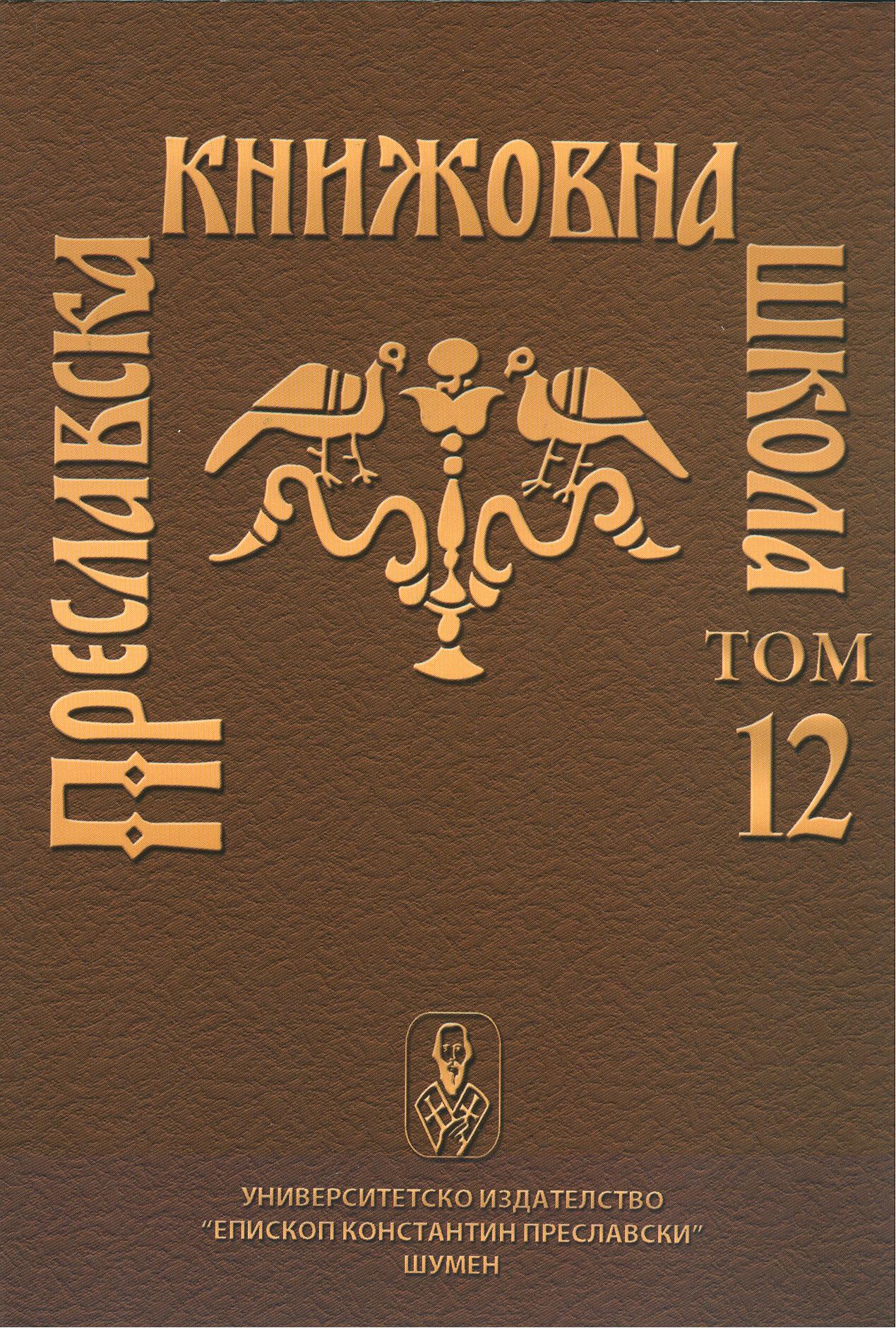
The article "On the kings and those under their power" (sheets 37a-41b) in the Archival Nomokanon represents Church Law. We give proof that it was written by tsar Simeon (913-927). The historic references in the text allow us to date its creation to 913, the year when Bulgarian church was proclaimed autocephalous in Veliki Preslav.
More...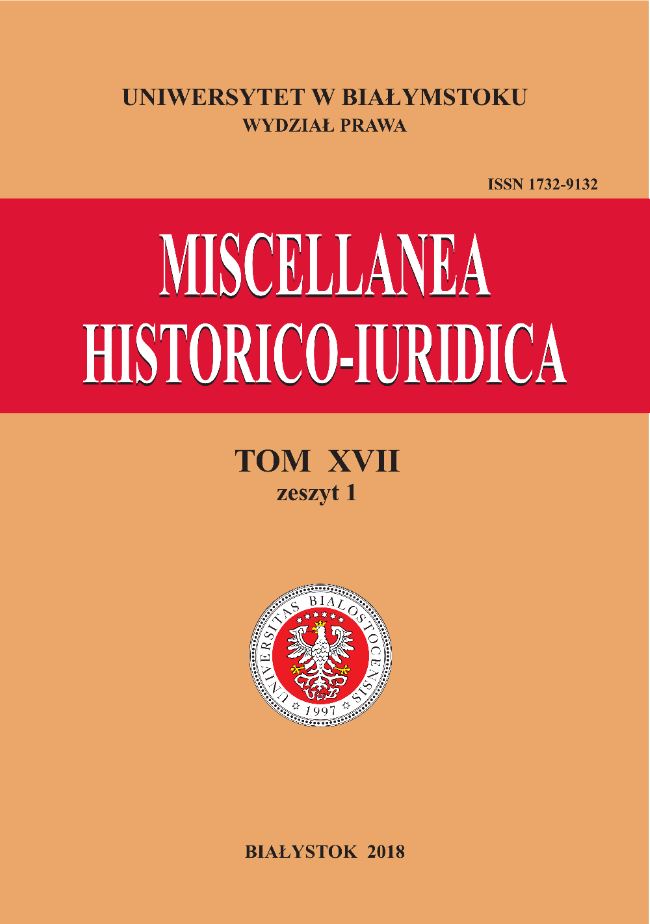
The subject of the article is to identify the factors and conditions that determined the system of government of the II Republic of Poland in the first years after regaining independence at the end of 1918. The study is devoted to three issues: the system of government at the turn of 1918 and 1919, the system of government under the Small Constitution and the system of government in the light of drafts of the Constitution of the II Republic of Poland. According to the author substitutes of the parliamentary system of government were born already in the first weeks of the functioning the Polish state authorities. Under the Small Constitution of 20 February 1919, an attempt was made to introduce the system of parliamentary supremacy. This turned out to be impossible given the high level of authority enjoyed by the country’s head of state – Józef Piłsudski, who also served as its commander in chief. Drafts of the Constitution assumed (mostly) the weak position of the president. In this way, the Constitution of 17 March 1921 adopted the parliamentary-cabinet system of government, which was modeled on the system adopted by the III French Republic.
More...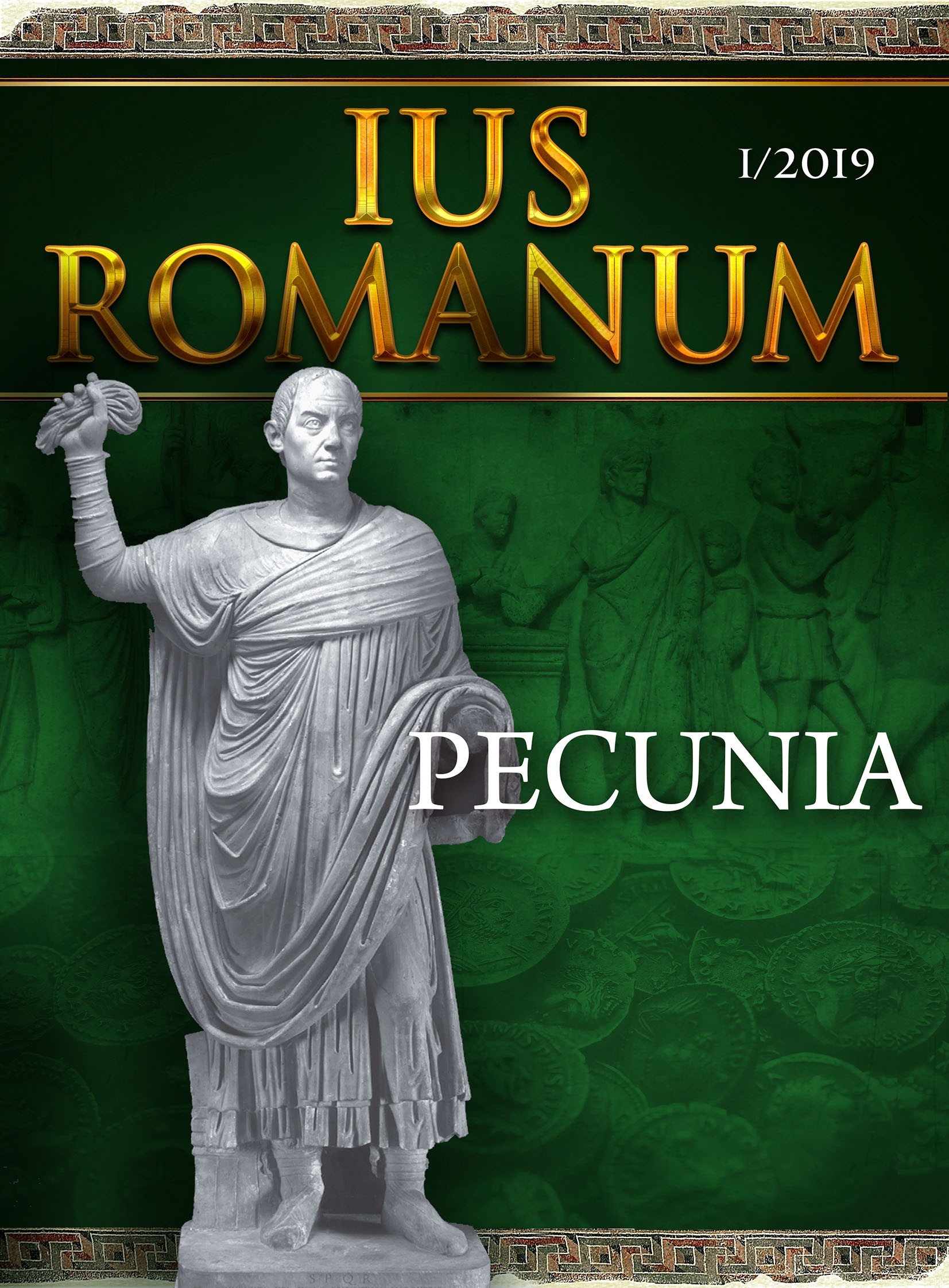
The article reviews the possible objects included in the treasure, the regulation of this legal institute in ancient Rome, and the possibility of application of Roman Law in comparison with Art. 351 of the Spanish Civil Code in relation to the at-tribution of scientific discoveries and art production to the treasures.
More...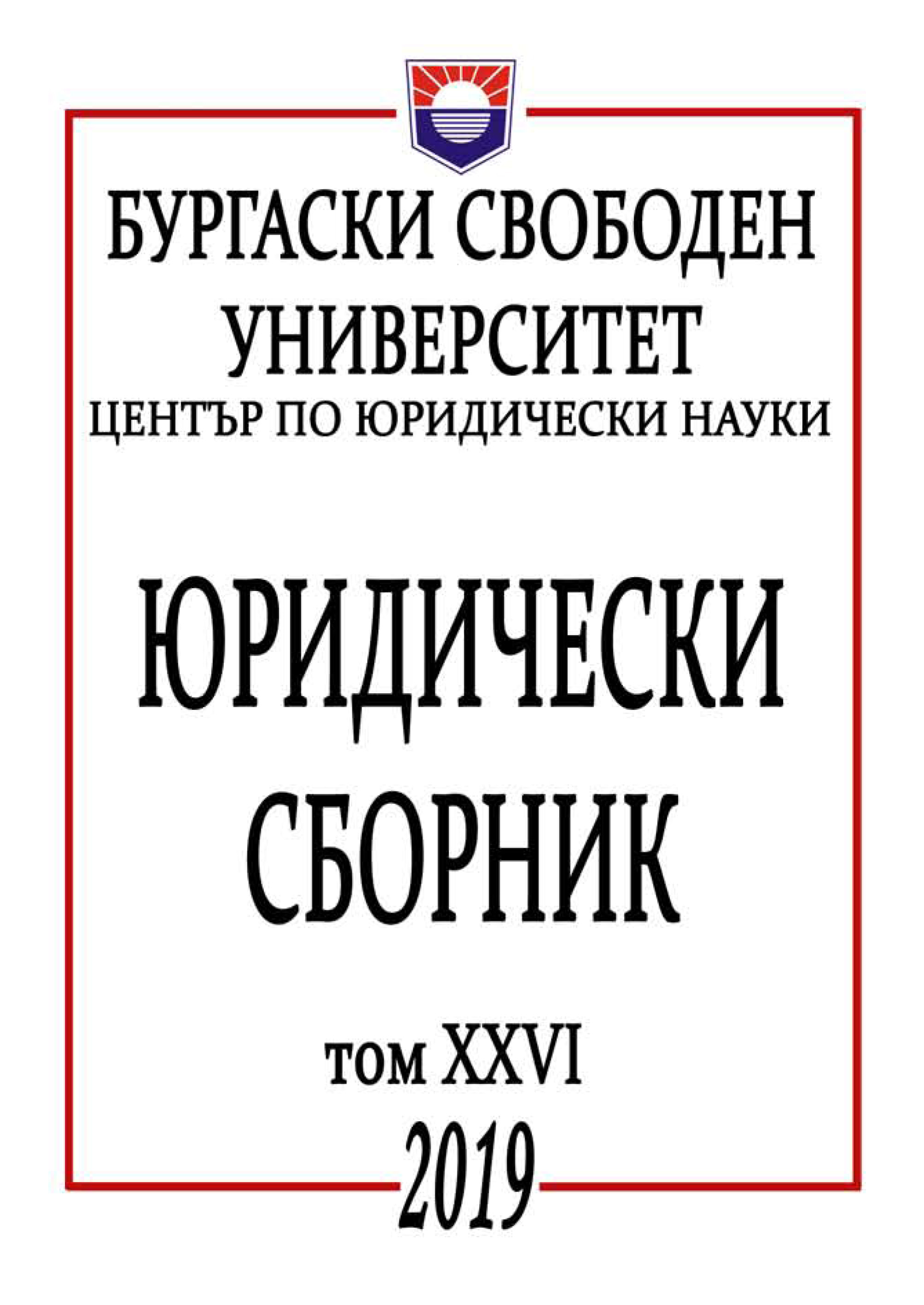
The aim of the report is to focus on the deepening work processes in another country that requires research on labor migration. Although Bulgarian legislation uses the terms „labor mobility” and „labor migration”, there is lack of scientific analysis of these law terms. On the one hand, nationals of one Member State are not migrants in another Member State because of the principle of free movement and residence. These nationals have all labor rights that Bulgarian citizens have. On the other hand, third-country nationals are considered as migrants and face some special requirements when they choose to work in Bulgaria. At present, such differences are not overcome by international and European law.
More...
This report pinpoints the serious issues that are related to the process of migration and the risks of terrorist attacks. It maintains that there should be put an equal effort into achieving two of the main goals. These include protecting the national security and public order watch- on the one hand, and the protection of human rights - on the other. In doing so there must be avoided any act of violation against the human rights.The particular judicial case, the decision of which was delivered in 2002, has significance not only for Bulgaria but also for the other European countries because the European Court established a loop in the Bulgarian law.In the following years after the decision has been rendered, the Bulgarian legislation was reformed and the opportunity for judicial review of the administrative acts for expulsion was provided.
More...
The need for labour force necessitates the development of mechanisms for access to the labour market by third-country nationals, taking into account the potential threats of migration to the national security. In Bulgarian legislation the terms under which foreigners may reside in the country for the purposes of employment and the procedures through which they might be granted the respective permits are defined clearly. The role of the services for administrative control of foreigners is essential in this process due to the mandatory requirement for the migrant to have the required residence permit to conduct work. Тhe report looks into the procedures for issuance of different types of documents for residence of persons with the aim of providing access to the labour market, implemented by the Migration Directorate of the Ministry of Interior and the respective sections„Migration” in the regional directorates of the MoI.
More...